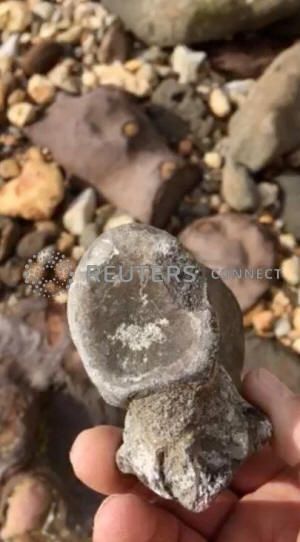|
The
air sacs, which are also seen in modern birds, were extensions
of the lung, the researchers said, and it is likely they helped
fuel an efficient breathing system while also making the
skeleton lighter.
One of the finders, Robin Ward, a regular fossil hunter from
Stratford-upon-Avon in central England, said: "The joy of
finding the bones we discovered was absolutely fantastic."
"I thought they were special and so took them along when we
visited Dinosaur Isle Museum," he said. "They immediately knew
these were something rare and asked if we could donate them to
the museum to be fully researched."
James Lockyer, from Spalding, Lincolnshire, in east England, was
also visiting the island when he found another of the bones.
"I was searching a spot at Shanklin and had been told and read
that I wouldn't find much there," he said. "However, I always
make sure I search the areas others do not, and on this occasion
it paid off."
Chris Barker, a doctoral student who led the study, said: "We
were struck by just how hollow the animal was – it's riddled
with air spaces. Parts of its skeleton must have been rather
delicate."
It is likely that the Vectaerovenator lived in an area just
north of where its remains were found, with the carcass having
washed out into the shallow sea nearby, the researchers said.
(Reporting by Paul Sandle; Editing by Angus MacSwan)
[© 2020 Thomson Reuters. All rights
reserved.] Copyright 2020 Reuters. All rights reserved. This material may not be published,
broadcast, rewritten or redistributed.
Thompson Reuters is solely responsible for this content.

|
|






